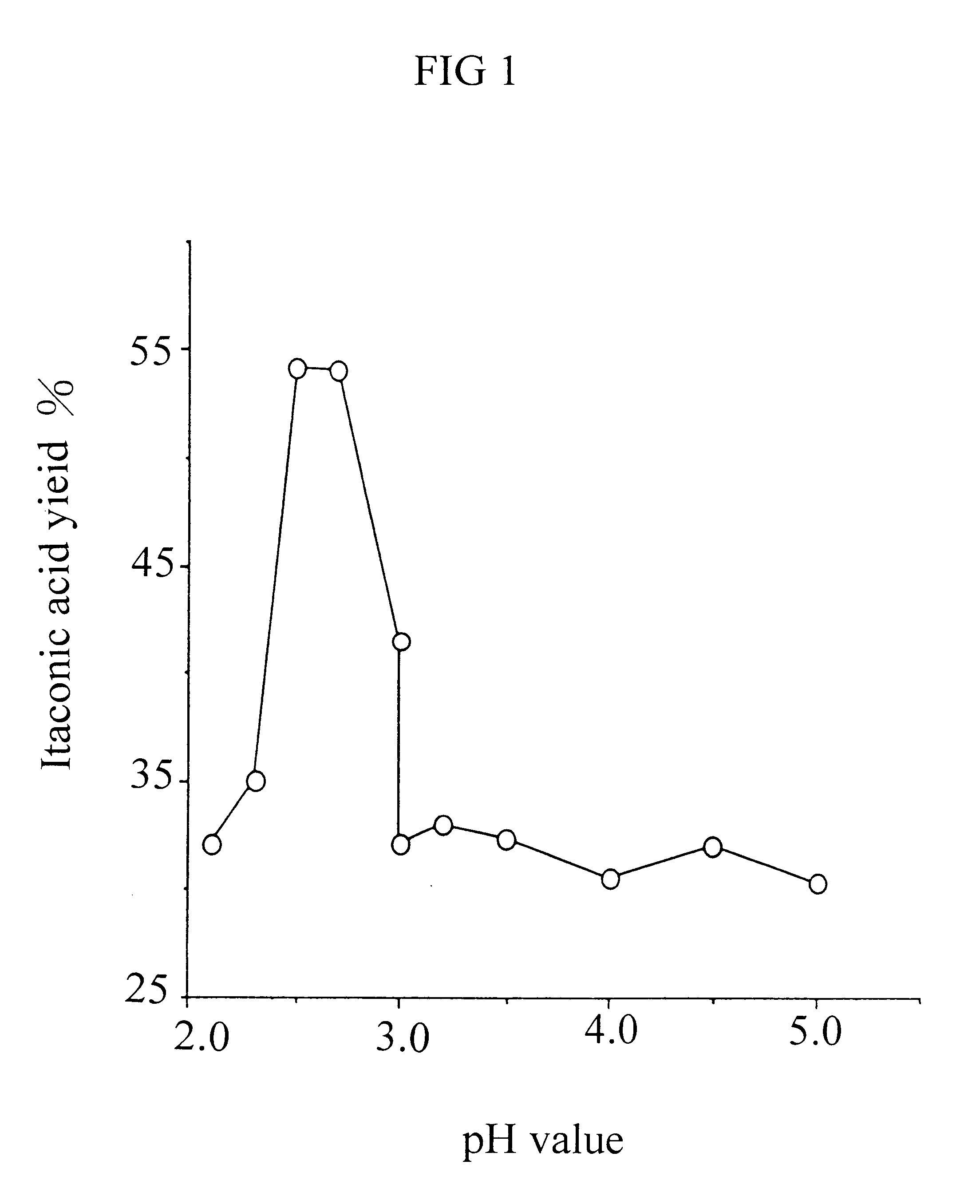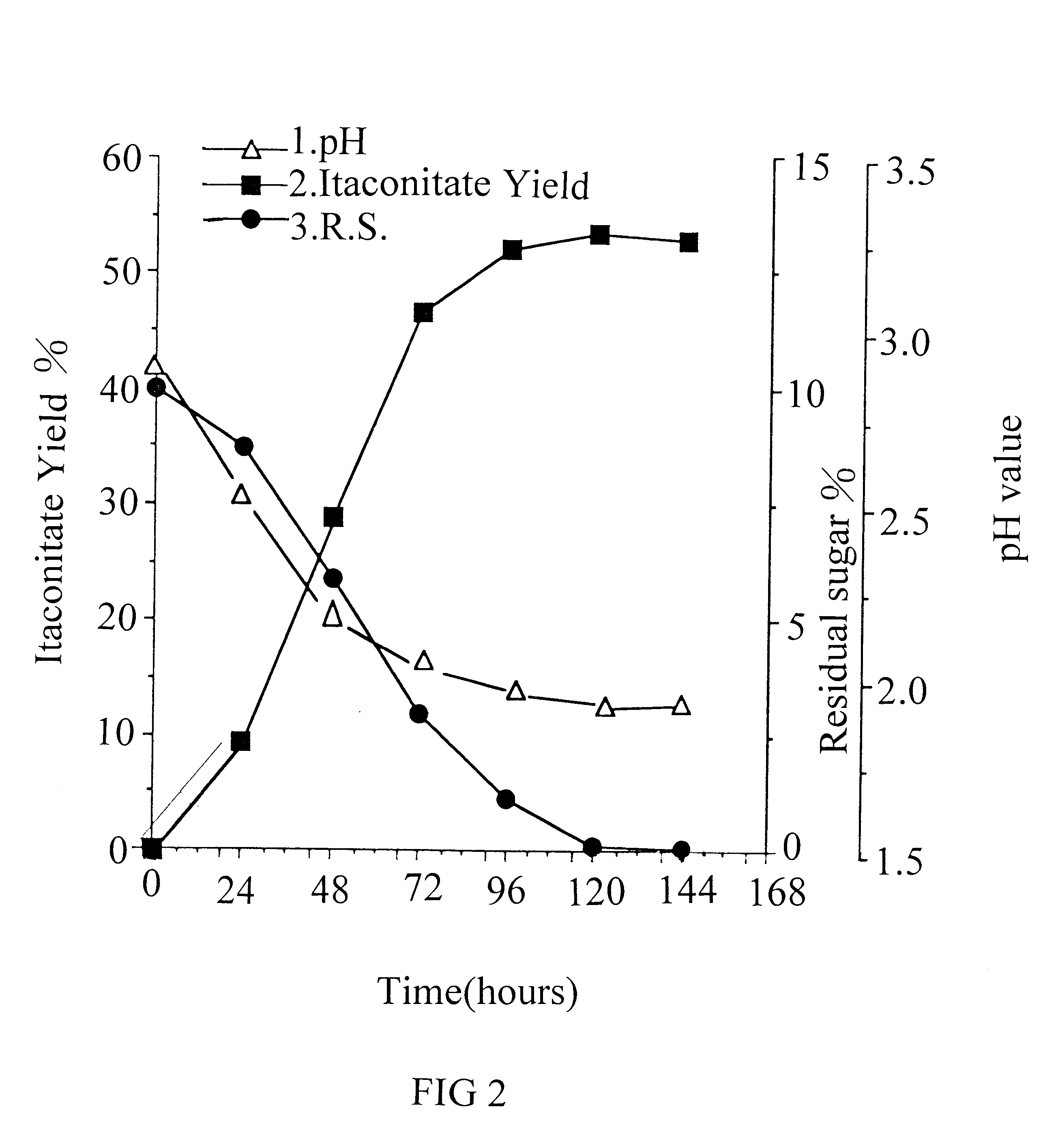Method for the production of itaconic acid using aspergillus terreus solid state fermentation
a technology of aspergillus terreus and solid state fermentation, which is applied in the field of method for the production of itaconic acid using aspergillus terreus solid state fermentation, can solve the problems that the method of immobilized fungus has not reached a practical mass production level, and the solid state fermentation for itaconic acid production has not been reported
- Summary
- Abstract
- Description
- Claims
- Application Information
AI Technical Summary
Problems solved by technology
Method used
Image
Examples
example 2
Itaconic acid solid-state fermentation process with peeled sugarcane pressmud as support and starch hydrolysate as carbon source.
The conditions used here are identical to those used in Example 1, except that the glucose(10%) w / v in medium A was replaced by 33% w / v starch hydrolysate which contained 30% w / v total sugar. The yield of itaconic acid based on the initial sugar content of medium reached 55% w / w.
example 3
Itaconic acid solid-state fermentation process with unwashed peeled sugarcane pressmud as support and starch hydrolysate as carbon source.
The conditions used here are identical to those used in Example 1, except that unwashed peeled sugarcane pressmud was used instead of washed pressmud and the glucose(10%) in medium A was replaced by 27% starch hydrolysate which contained 30% total sugar. Since the unwashed pressmud contained 17% sugar, the initial sugar content of the medium of Example 3 was the same as that of Example 1 and 2. The yield of itaconic acid based on the initial sugar content of medium reached to 50%.
example 4
Itaconic acid solid-state fermentation process with washed unpeeled sugarcane pressmud as support and starch hydolysate as carbon source
A 10 g sample of washed and dried unpeeled sugarcane pressmud was rehydrated in 250-ml flask with 40 ml of medium B, which has the same composition of medium A except that the glucose concentration is 12% instead of 10%. The other conditions used are identical to those used in Example 1. FIG. 3 demonstrates the time course of fermentation. The yield of itaconic acid based on the initial sugar content of the medium reached 42%.
PUM
 Login to View More
Login to View More Abstract
Description
Claims
Application Information
 Login to View More
Login to View More - R&D
- Intellectual Property
- Life Sciences
- Materials
- Tech Scout
- Unparalleled Data Quality
- Higher Quality Content
- 60% Fewer Hallucinations
Browse by: Latest US Patents, China's latest patents, Technical Efficacy Thesaurus, Application Domain, Technology Topic, Popular Technical Reports.
© 2025 PatSnap. All rights reserved.Legal|Privacy policy|Modern Slavery Act Transparency Statement|Sitemap|About US| Contact US: help@patsnap.com



